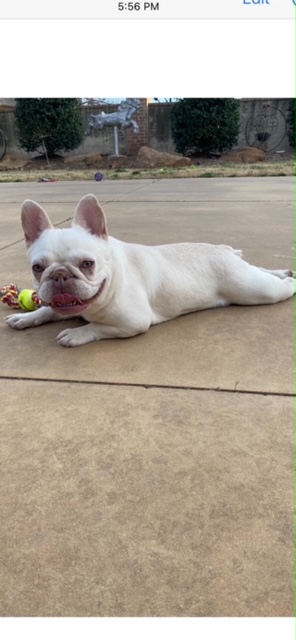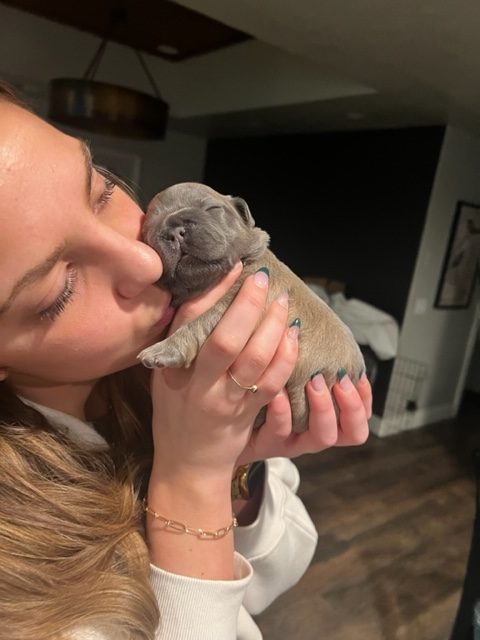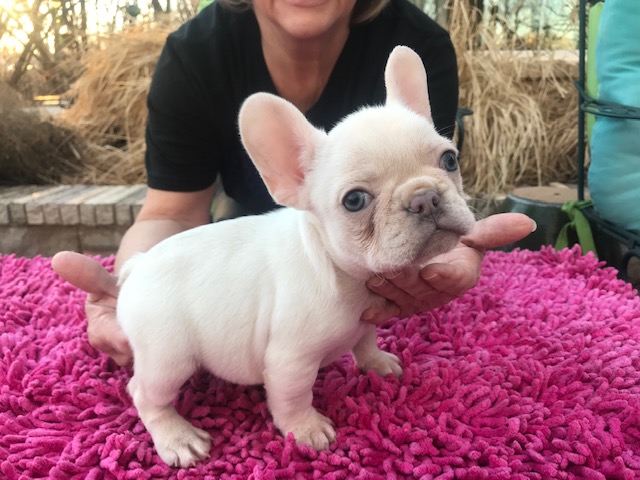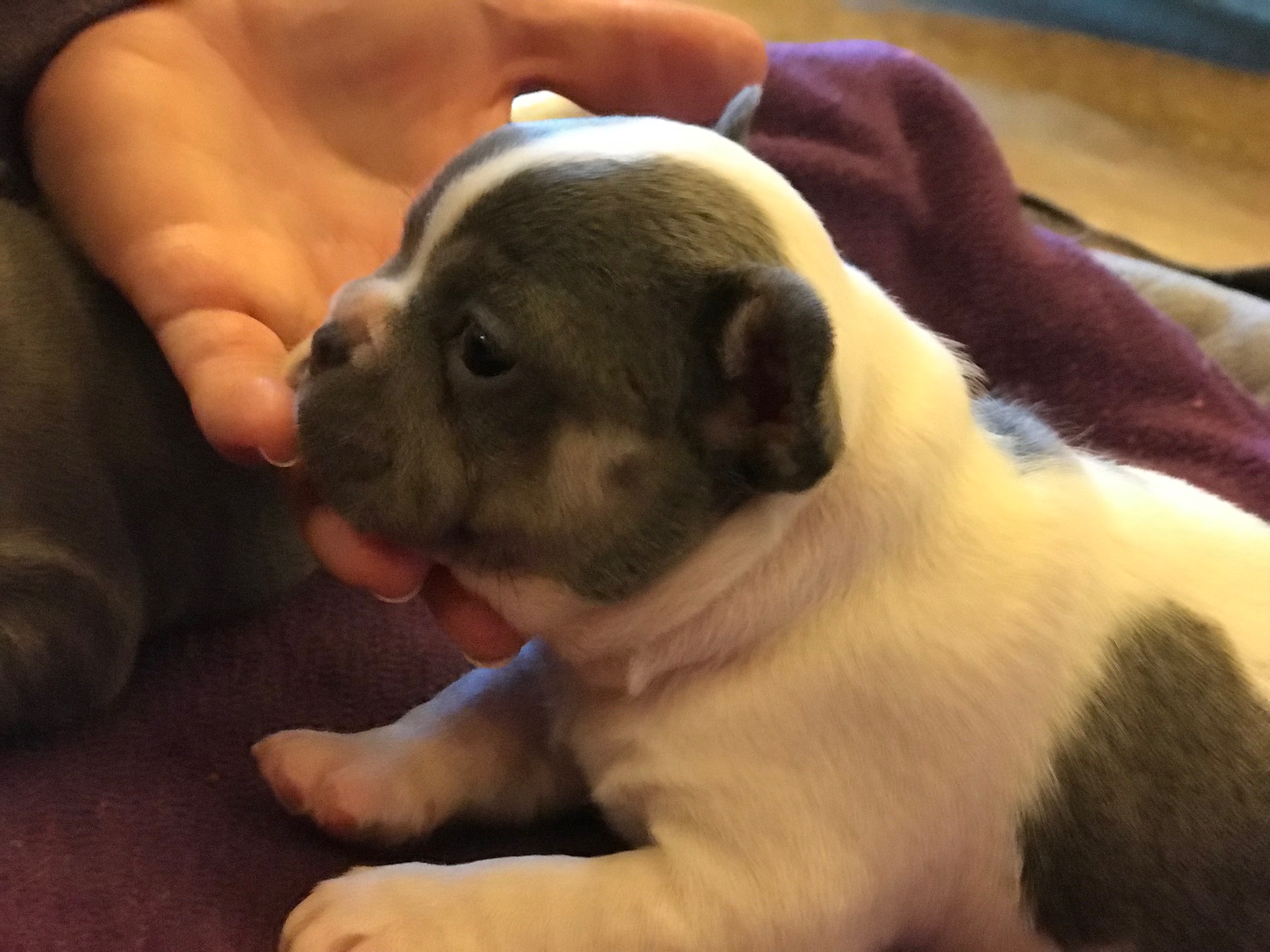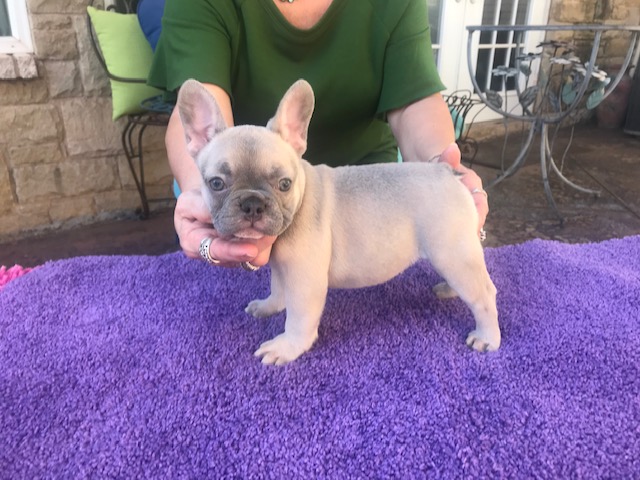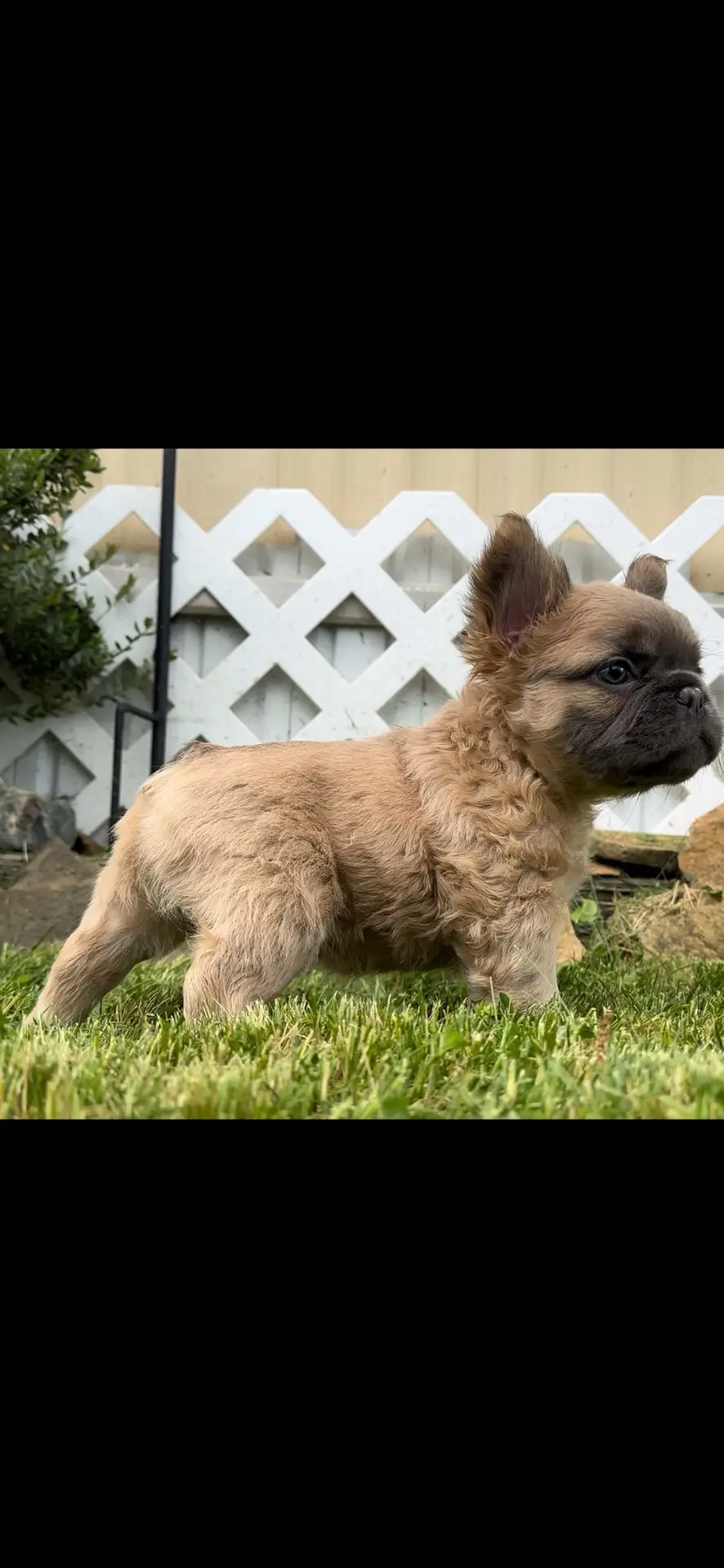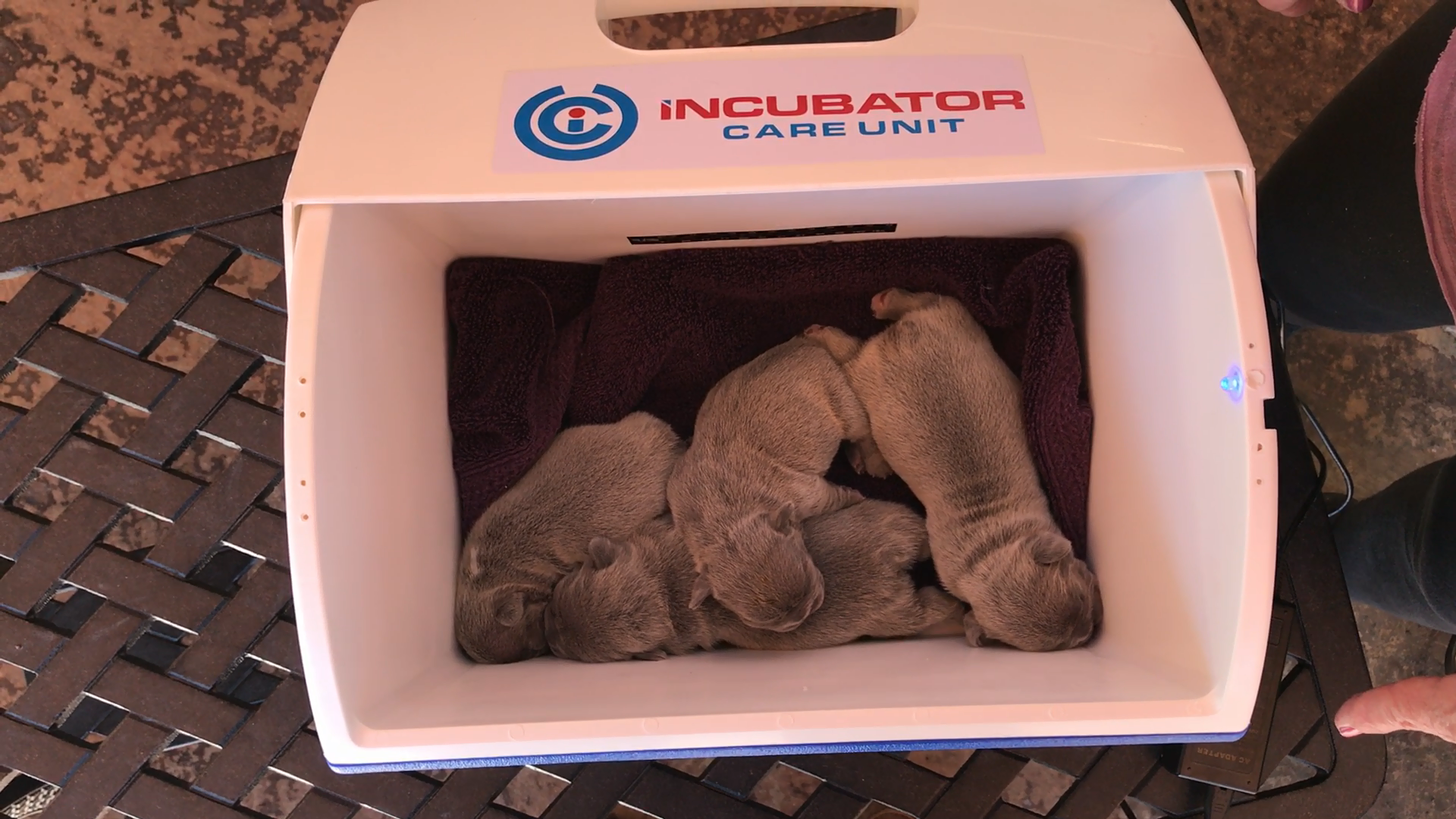
Portable Incubators Save Lives
If You Raise Puppies You Need One
There is a small (shown above) and a larger version
Thousands of people are using our incubators around the world
The single biggest killer of puppies is cold. New born puppies can’t regulate the temperature for the first week, So they have to have a source of heat keep them from getting cold. Puppies snuggle up to mother and keep warm but they also get pushed away from mother by competing pups. Smaller or weaker pups can end up in an area where there’s no heat and lose body temperature quickly. A cold puppy will become lethargic and die in a matter of an hour or two. Small and weak puppies are the most vulnerable.
If you have a lethargic puppy. Put your pinky finger in its mouth. It should be nice and warm and the puppy should start suckling. If it is cold or there is no suckle response first order is to get it’s body temperature back up. The temptation is to get a bottle and feed some warm milk. Don’t. Putting milk on board will stress the puppy further. Energy that the puppy could used to get warm will be diverted to digest milk. A puppy can go with out food for 24hrs, but cold can kill in under an hour.
An Incubator with 100 F /38c regulated temperature will bring a puppy from the brink of death to a squirming puppy who wants to nurse with in an hour. I have saved many puppies this way.
You can heat towels in the dryer or rice bags in the microwave. Both will work in a pinch. But the best way is an incubator. You can leave a weak puppy in an incubator overnight and know it will be kept at exactly the right temperature. I have had neonatal’s in an incubator for a week. Tube feed and raised them to healthy beautiful puppies.
Incubators: On why you would need an incubator for your newborn pups.
Incubator Care Unit $300
You can purchase and get more information about the Incubator Care Units we helped develop at My Breeder Supply.
- Smaller unit Big enough for 9 Frenchie puppies 16qt volume
- Larger Unit Big enough for a litter of Labs 64qt Volume.
- Does Not dry out the air like other incubators.
- Robust, no fans or light bulbs to clog up or break
- Useful for transporting newborns to and from the vet.
- Perfect environment to keep a watchful eye on those in trouble.
- Portable and easy to clean insulated container.
- Easy to use temperature control for steady thermal environment.
- always remembers the last temp setting.
- Vent for air circulation.
- Always on LED light.
- Safe 12 volt power for use in home or auto
- 110/220 volt adapter can be used anywhere in the world.
Puppy Information
Newborn puppies need warmth more than food. At birth the puppy’s body temperature is the same as the mother’s, after delivery the core temperature will drops several degrees the body (rectal) temperature should fall between 95° and 99°F. If it drops below 94°F, your puppy could be facing life-threatening hypothermia. Puppies depend on their mom to maintain their body temperature. Without external heat, it doesn’t take long for a puppy to become chilled. Chilling gravely reduces the puppy’s metabolism. Newborn puppies can’t generate their own body heat until they develop the shiver reflex at around two and half weeks. Hypothermia is the single greatest problem for infant puppies. Low puppy temperatures for the first few weeks is also one of the biggest reasons for herpesvirus ** being able to successfully infect a litter.
It is very important to keep puppies warm for the first week to ten days of age. If the puppies are not gaining weight and suckling properly, this should be considered as abnormal and be investigated. Most health young puppies will double their birth weight in the first 7 to 10 days of birth and then double it again within the next three weeks. It is always a good idea to keep young puppies that are sick and nursing in a warm area, the puppies resistance is weaken when exposed to chilling conditions. If they crawl away from the rest of the puppy group, it will increase the cold stress and exacerbate the onset of their deterioration. Besides keeping all he young puppies warm, the weak, less active, sick or fading puppies need special care to ensure their best chance for survival. Remember the loss of body heat and chilling is a common reason for rapid decline in sick puppies.
Distressed Puppies
Despite our instinct to want to immediately feed a puppy in trouble, warmth is far more critical than food. Cold puppies can’t nurse or digest food. Their heart rates drop, and the circulatory and respiratory systems collapse. They won’t last long under these conditions. Warming a chilled puppy too quickly can also be fatal. Puppies that have a low body temperature should be warmed slowly over a few hours to a normal temperature of about 97°F. A normal body temperature should be reached before feeding these puppies.
When you’re ready to set up the nest, place clean towels or puppy pads in the Incubator Care Unit. If the puppies are open-mouth panting, the box is too warm. Your litter can help you gauge their comfort level easier than just one puppy can. Chilled puppies will cry and gather in a pile trying to keep each other warm. Puppies that are too warm will separate and sleep apart.
Dangers
Manufacturers of heating pads made for people do not recommend them being used on animals. Even on the low setting temperatures can get dangerously hot. Most heating pads made for people will shut themselves off after a certain time. And mum can bite the power cord.
Heat lamps will warm them up, but can also dehydrate the puppies as well as being hard to regulate their temperature. The puppies can easily become overheated with no way to escape using these methods to warm the puppies.
Temperature
Within twenty-four hours being born, there core (rectal) temperature should be 95° to 97°F Their temperature steadily increases, until at 3 weeks of age the rectal temperature is 98° to 100°F Eventually they’ll sustain a normal temperature of 101.5°F.
During the first week of life, p not have the capacity to constrict the blood vessels at the surface of their skin to retain heat. A newborn is able to maintain a body temperature the litter is 6 weeks old.
Use common sense. If ther and are quiet or sleeping the temperature is fine.
